Do you know what keeps rain from causing chaos in your home? That’s where gutters come in! Many homeowners don’t know the parts of a gutter system.
Yet, do not fret, for we are here to help! This guide will explore each piece of your gutter system. From the basics to the detailed parts, we’ll break it down simply.
Ready to get gutter-smart? Let’s start this article and learn about these essential parts together!
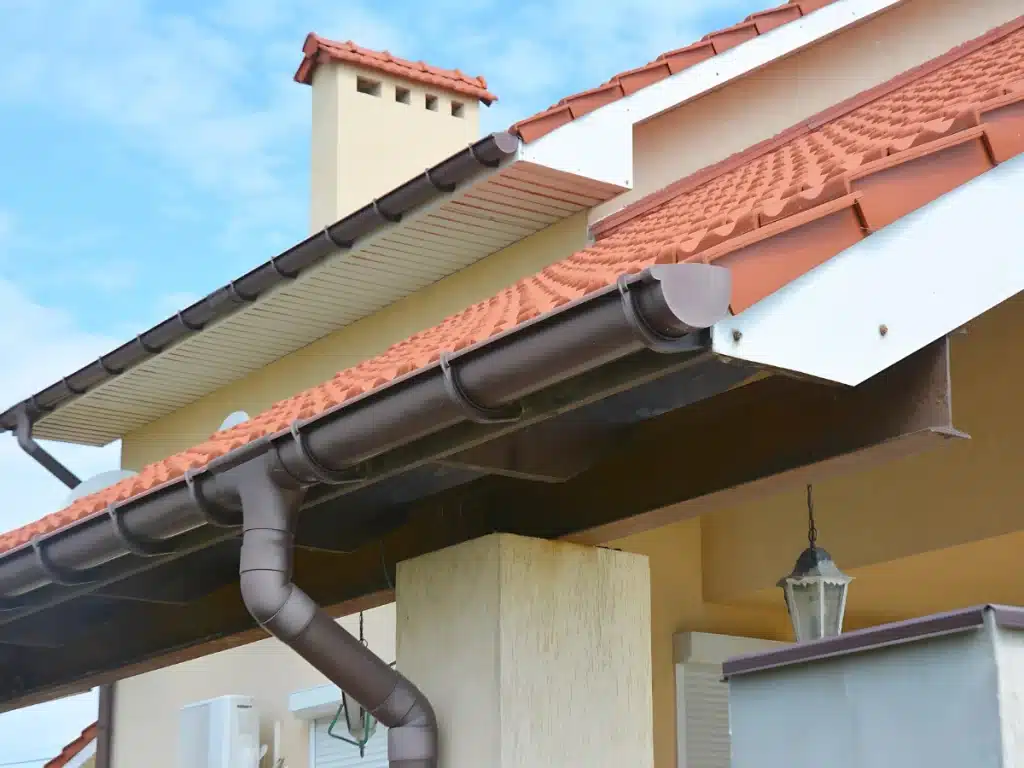
Understanding the Gutter System Components and Sections
Gutters are key for guiding rainwater away from your home’s base. The main part, the gutter itself, catches rain from the roof. Downspouts, linked to the gutters, direct the water safely to the ground. Without downspouts, water would spill over, causing damage.
End caps close off the ends of the gutters to stop leaks. They make sure water flows correctly into the downspouts. To keep out debris, gutter guards are vital. These guards prevent leaves and twigs from clogging the system.
Elbows join downspouts to the gutters at angles. They direct water flow where straight pipes can’t. Outlets link the gutters to the downspouts. Without them, water wouldn’t transfer well between the two.
All these parts work together to protect your home. If one part fails, the whole system can be at risk. Regular checks ensure everything works properly. Watch your gutter system to avoid issues.
The Parts of A Gutter System
Here are the different parts of the gutter system:
Gutters
Gutters are channels that collect rain from the roof. They are fixed along the edges of the roof. Popular types include K-style and half-round gutters. K-style gutters are common in homes due to their nice look.
Half-round gutters are used in old or fancy homes for their classic design but hold less water. Gutters come in different sizes, usually 5-inch or 6-inch, based on roof size and rain levels.
Materials for gutters include aluminum, vinyl, copper, and steel. Aluminum is light and resists rust. Vinyl is cheap but less sturdy in tough weather.
Copper is strong and stylish but costs more. The shape of gutters can be U-shaped or more angled. Shapes affect how well water flows. The best shape depends on your roof design and style.
Gutters protect your home by directing rain away from the foundation, stopping damage. Without them, water can erode soil and harm your home. Keeping gutters in good shape is key.
End Caps

End caps close the ends of gutters to stop water from leaking out. There are left and right end caps for each side of the gutter system.
These caps match gutter sizes, usually fitting 5-inch or 6-inch gutters. They are made from aluminum, vinyl, or copper, matching the gutter material for a seamless look.
End caps can be flat or curved. Flat end caps give a clean finish, while curved end caps are for half-round gutters. Both types of seal gutter end well.
End caps need to be durable since they face weather elements. Aluminum and copper end caps last longer than vinyl. Properly installed end caps can last many years without issues, keeping the gutter system intact.
Gutter Miters
Miters are angled parts that join two sections of gutter at corners, ensuring smooth transitions and stopping leaks. Common types include inside and outside miters. Inside miters are used at inside corners, while outside miters are for outside corners.
Inside miters are typically placed where two gutter sections meet at an inner corner, like the corners of a house. Outside miters are used where gutter sections meet at an outer corner, such as around a bay window.
Miters come in sizes that match the gutter system’s dimensions, usually fitting 5-inch or 6-inch gutters. Their shapes can differ based on the gutter style. Durability is key since miters face weather and potential damage.
Properly installed miters ensure a tight, leak-free seal at corners, maintaining the gutter system’s integrity. Without them, water can seep through corners and damage the home’s exterior. Securely installed miters prevent leaks and extend the gutter system’s life.
Downspouts
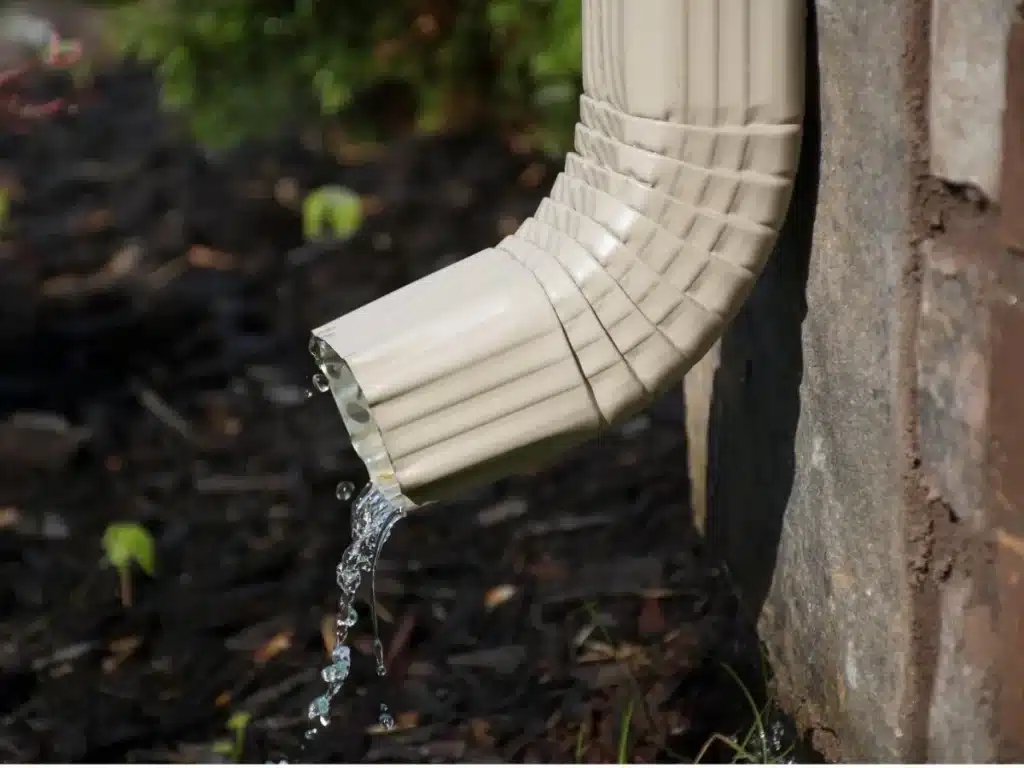
Downspouts are vertical pipes that carry rainwater from gutters to the ground, directing it away from the home’s base. Types include standard, decorative, and flexible downspouts. Standard downspouts suit most homes, while decorative ones add aesthetic value.
Downspouts are used where water needs to be directed away from buildings, like homes and sheds. They are placed at each house corner or along longer gutter runs.
Downspouts come in various sizes, commonly 2×3 inches or 3×4 inches. They can be round or rectangular to match the gutter system.
The main role of downspouts is to stop water damage by directing rainwater away from the building. They help avoid foundation erosion, basement flooding, and soil saturation.
Properly installed downspouts ensure efficient water flow and home protection. Keeping downspouts clear and functional is essential for maintaining a home’s structure.
Elbows
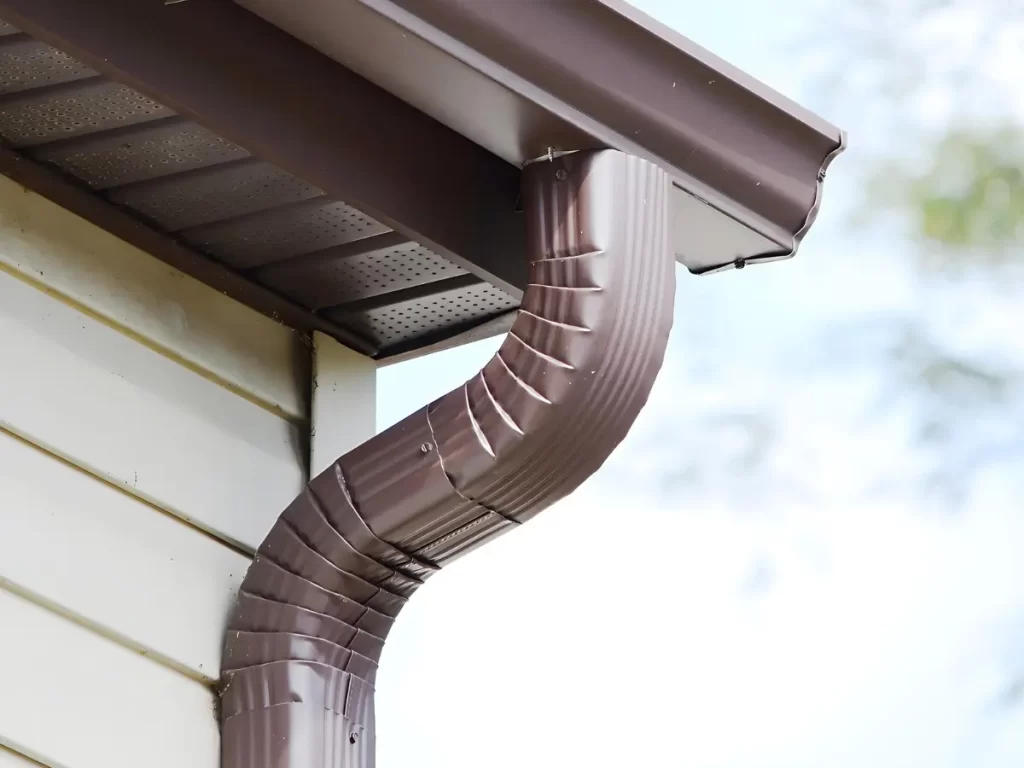
Elbows are curved pieces that direct water flow in a gutter system. They join sections of downspouts and adjust the drainage angle.
Common types are A-style and B-style elbows. A-style elbows handle front and back flow changes, while B-style elbows manage side-to-side shifts.
Elbows are used where downspouts need to go around structures. They are key for moving water away from the foundation and other vital spots. Homes with complex roofs or multiple levels often need them. Elbows ensure controlled water paths.
Elbows come in sizes to fit downspouts, usually 2×3 or 3×4 inches. Shapes fit standard downspouts, with angles at 30, 45, or 90 degrees.
The main job of elbows is to guide rainwater through the gutter system smoothly. They help stop water from pooling around the house. By directing water properly, elbows protect the foundation and yard. Regular checks of elbows keep the system working well.
Gutter Guards
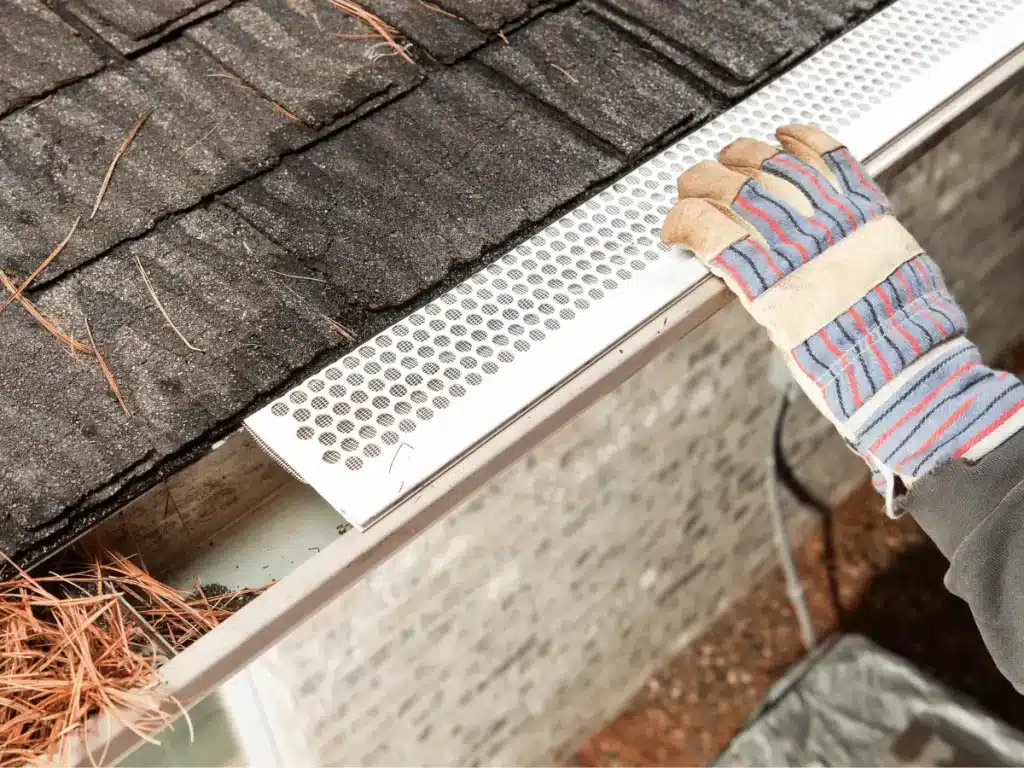
Gutter guards are covers placed over gutters to block debris while letting water pass through. Types include mesh, screen, and reverse curve guards, each fitting different roof styles and needs.
Mesh guards have tiny holes that block small debris, ideal for places with lots of trees. Screen guards are similar but have larger holes. Reverse curve guards use a curved design to channel water into the gutter while pushing debris away.
Gutter guards come in various shapes and sizes, customizable to any gutter system. They can be made from plastic, aluminum, or steel, with steel being the most durable.
The main job of gutter guards is to cut down on upkeep by preventing clogs from leaves and twigs, and keeping water flowing smoothly.
Pipe Straps
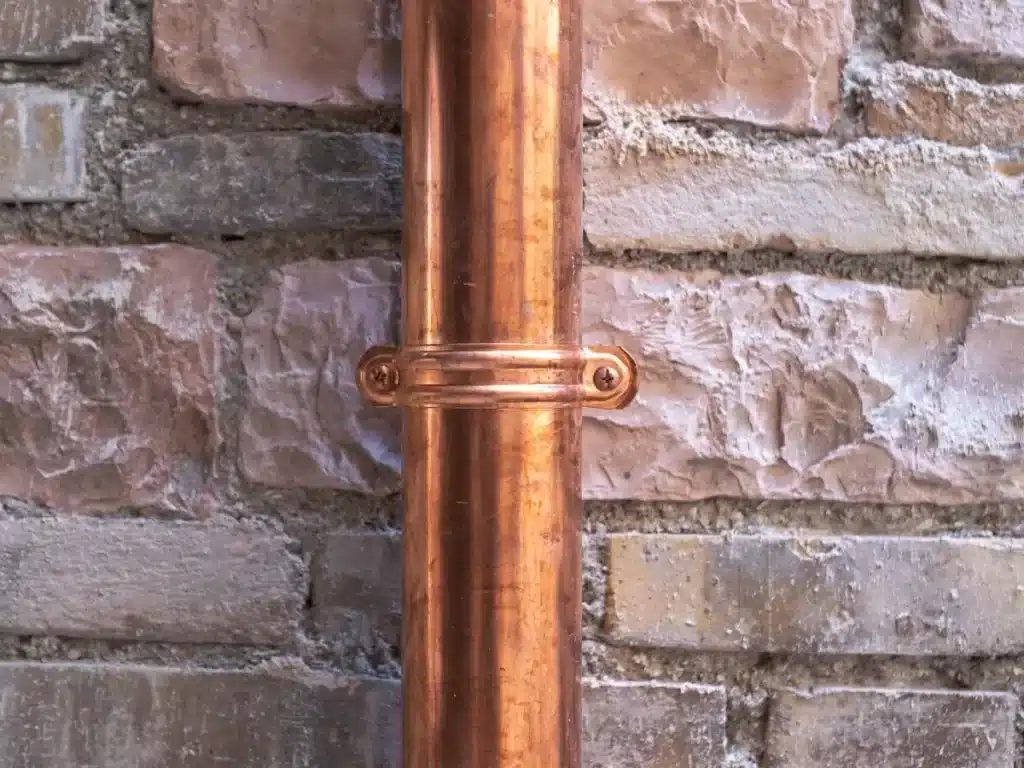
Pipe straps, also called pipe brackets, hold downspouts to the walls. They keep downspouts steady, especially in heavy rain. Types include half-round and rectangular brackets. These are used where support and stability for downspouts are needed.
Pipe straps anchor downspouts to stop movement. They are key for keeping the gutter system aligned and stable. You see them in homes and commercial buildings. They are helpful in places with strong winds or heavy rain.
Pipe straps come in sizes to fit different downspout dimensions, usually for 2×3 or 3×4 inches. Shapes fit snugly around the downspout and attach to the wall.
The role of pipe straps is to keep downspouts firmly attached to the building. They stop downspouts from coming loose and causing water damage.
Properly installed straps make sure water is directed away from the foundation. Regular checks of these brackets are crucial for the gutter system’s long life.
Gutter Spikes and Ferrules
Gutter spikes and ferrules secure gutters to the fascia board. The spike goes through the gutter and ferrule, then into the fascia to hold everything in place. They are used in both homes and commercial buildings, especially in traditional gutter setups.
Common materials for spikes and ferrules are aluminum, steel, and copper. They provide a strong, reliable hold, keeping the gutter system stable in heavy rain and wind.
Sizes of gutter spikes and ferrules vary, typically around 7 inches for standard setups. Ferrules are cylindrical, while spikes are tapered.
Their primary function is to firmly attach gutters to the house, preventing sagging or detachment underweight. Regular checks ensure they stay secure and effective, maintaining the whole gutter system’s integrity.
Splash Blocks

Splash blocks, placed at the end of downspouts, direct water away from your home’s foundation. They help prevent soil erosion and water damage, typically found in residential areas. Common materials include plastic, concrete, and metal.
There are decorative and functional splash blocks. Decorative ones add visual appeal, while functional ones focus on water flow. They are useful in places with heavy rainfall. Homeowners pick types based on need and style.
Splash blocks come in various sizes, often 24 to 30 inches long. Shapes range from simple rectangles to intricate designs.
Durability depends on the material; concrete is sturdy, while plastic is lighter and easier to move. Selecting the right size and material is crucial.
FAQ
What is the piece called that connects the gutter to the downspout?
The piece that connects the gutter to the downspout is called the “elbow.” It redirects water from the gutter into the downspout. Elbows come in different angles to fit various gutter systems. They are essential for proper water flow.
What is the thing at the end of a gutter called?
The piece at the end of a gutter is called the “end cap.” End caps close off the open ends of the gutter. They prevent water from spilling out. Properly installed end caps keep your gutter system functioning well.
What is the pipe connected to the gutter called?
The pipe connected to the gutter is the “downspout.” Downspouts channel water from the gutter to the ground. They come in various shapes and sizes. Proper downspout installation ensures effective water drainage.
Is a gutter system always necessary?
A gutter system is highly recommended. Homes with sloped roofs benefit most from gutters, which manage water flow and protect foundations. Sometimes, alternate drainage systems are used, but gutters are preferred.
What are the basic parts of a gutter system?
Basic parts include gutters, downspouts, elbows, and end caps. Additional parts are brackets, splash blocks, and miters. Each part plays a vital role, working together to manage water effectively.
What materials are best suited for a durable gutter system?
Aluminum and vinyl are popular for durability and cost. Steel is strong but can rust. Copper is very durable and visually appealing. Choose based on budget and climate.

2 thoughts on “What Are the Parts of A Gutter System? Gutter Components and Functions”
Comments are closed.